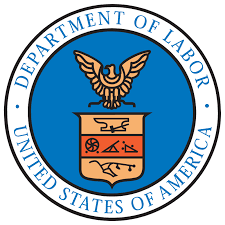
If you want the perfect example of what not to do in litigation, just read the first paragraph of this FLSA opinion from the Eleventh Circuit Court of Appeals.
In this labor dispute, the district court ordered defendant Outokumpu Stainless to produce key time and pay records. For more than two years, Outokumpu begged for more time and promised both the court and the plaintiffs that it would produce the records—but time after time, it failed to comply. And as it repeated this pattern, Outokumpu began to paint its third-party payroll processor as the true culprit. Until, that is, the payroll processor caught wind of Outokumpu’s misrepresentations and corrected the record. Confronted with a merry-go-round of broken promises and blatant misrepresentations, along with an upcoming wage-and-hour trial for which no wages or hours were known, the district court issued the only sanction remaining in its arsenal: default judgment.
Hornaday v. Outokumpu Stainless, USA, LLC, No. 22-13691, 2024 WL 4471161 at *1 (11th Cir. Oct. 11, 2024).
Ouch. And, it didn’t get any better from there.
This was a complex FLSA case because Outokumpu’s payment system for employees was complex. The pay rate changed based on the shift worked, the way time was rounded, the level of work, and the company’s monthly incentive plan. Whether overtime was paid correctly depended on these factors as well as how Outokumpu defined its workweek.
As a result, detailed time records were essential for determining what, if anything, employees were owed. And, employers unquestionably have a duty under the FLSA to make, keep and preserve time records. 29 U.S.C. § 211(c). Yet, Outokumpu could not, or would not, produce time records establishing its methods for calculating employee pay. Then, it engaged in a protracted practice of making promises and shifting blame for its lack of production. The trial court bent-over-backwards and gave Outokumpu numerous chances, but ultimately determined that the conduct was so egregious that only one result was proper: victory for the employees.
When Outokumpu appealed, things only got worse because the employees cross-appealed. The Eleventh Circuit found a “remarkable lack of contrition” on the part of Outokumpu, affirmed the trial court’s grant of default judgment and actually reversed a part of the trial court’s decision in favor of the employees. The employees had asked the trial court for damages dating back to 2015, and the court denied that request. The Eleventh Circuit reversed because the trial court did not explain its reasons for denial. In short, it’s possible that Outokumpu’s damages might actually increase as a result of its appeal.
To me, there are two main take-aways from this case:
- Employers must embrace their duty to keep time records. If you fail to keep detailed, accurate time records for all employees, bad things will happen to you in FLSA litigation.
- At some point, you have to fall on your sword. You might disagree with a Judge’s ruling, but sometimes there’s no way to salvage victory from defeat. It’s always easy for me to Monday-morning-quarterback a case, but Outokumpu needed to shift strategy at some point and work on limiting damages, instead of seeking to avoid any liability.








